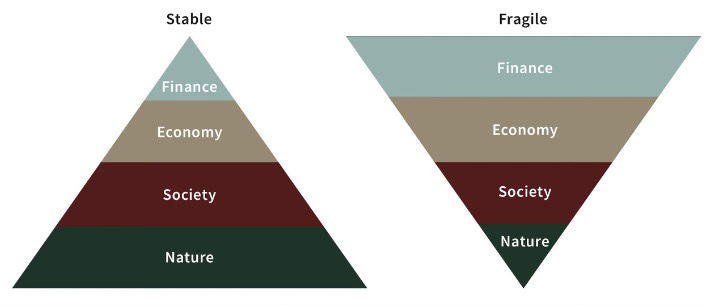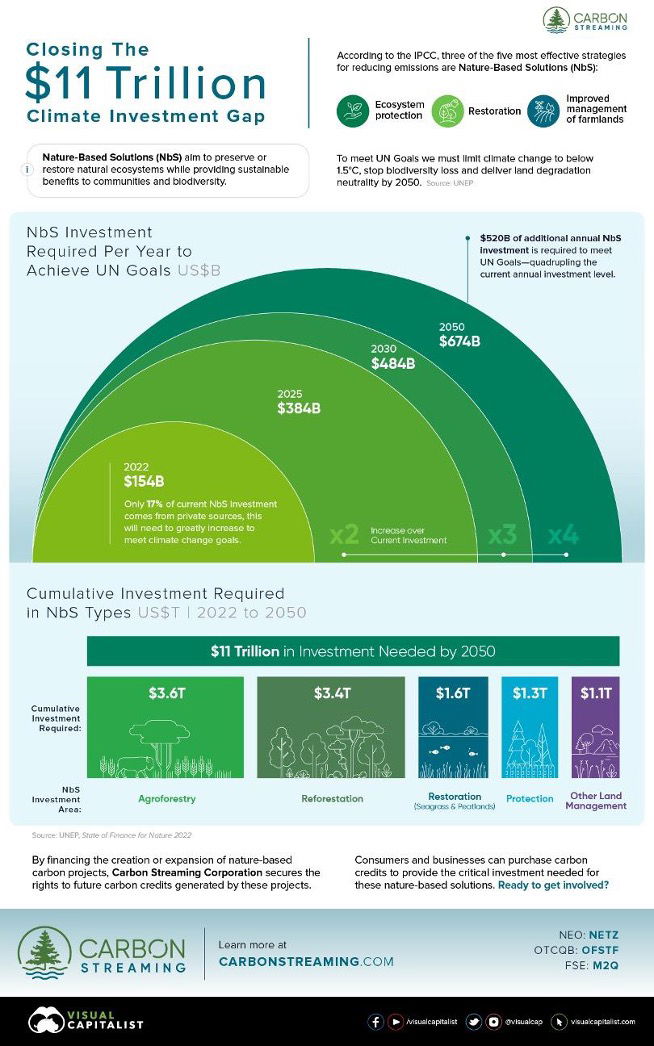· 11 min read
Introduction
The concept of human rights has evolved over time and space, encompassing various aspects of human existence. While human rights have traditionally focused on individual liberties and necessities, the growing recognition that a healthy planet is essential for our survival has resulted in the United Nations declaring it in 2021 as a fundamental human right.
There are many efforts underway to improve the human condition and the health of our planet and I am not wise enough to integrate these efforts into one that is holistic and actionable. What I do know is that a well-crafted and actionable mission or purpose statement can serve to focus goals, objectives, actions, and mobilize people, organizations, and institutions. The purpose of this article is to increase the visibility of this right, the history that led up to it, its risks, and its importance to human well-being, future generations, and life on planet Earth.
From Africa to around the world
Homo sapiens migrated out of Africa roughly 70,000 years ago and had spread across the planet by roughly 12,000 years ago. Homo sapiens are overwhelmingly short-term focused, partly a result of the human life span. The world population has also grown exponentially from perhaps 5 million 10,000 years ago to over 8 billion today, with projections of nearly 10 billion by 2050 (Figure 1). A rich and healthy planetary ecosystem supported this expansion. We also know that the carrying capacity of the planetary ecosystem is limited, although estimates vary wildly based on the assumptions. Nonetheless, we have transformed ourselves into the masters of the entire planet and the terror of the ecosystem.
For most of Homo sapiens' migration out of Africa and around the world, the planet's ecosystem has not been in peril due to human impacts, and there was no compelling reason to declare a healthy planet a human right. This is increasingly tied to the newly recognized geologic epoch, the Anthropocene. Now, our impact on the environment is so great that our very survival depends on it.
Figure 1. World population for the past 10,000 years.

The cost—disruption to chaos
Access to clean air, water, food, a stable ecosystem, and climate are fundamental requirements for life. The degradation of the environment through such factors as pollution, habitat and biological diversity loss, and climate change directly impacts the ecosystem and human health, especially for the most vulnerable. The costs of an unhealthy planet are great and are expected to grow.
Understanding how the ecosystem works, how we impact it, and planning solutions in normal times can be very complicated. Solutions become nearly impossible as the ecosystem is increasingly disrupted, essentially turning the ecosystem into chaos. That is, changes happen chaotically and so rapidly that they cannot be adequately studied, understood, and responded to in a rational way. This makes predictions and estimates for meaningful planning very difficult, if not impossible. Thus, we are in an existential crisis.
The fundamental issue
As humans, we are overwhelmingly short-term focused and often do not recognize that there is only one planetary ecosystem. We live within our own human constructs. Without knowing it, we are making these constructs fragile by relegating nature to a position other than the basis on which we depend (Figure 2). Nonetheless, the supporting evidence for this crisis is overwhelming. Myriad efforts have brought this crisis into our daily lives, such as the original 1972 Limits to Growth, update to the 1972 Limits to Growth model, The Limits to Growth +50, We Don’t Have Time, Inside Climate News, Engineering with Nature, illuminem, United Nations, and perhaps the greatest collection of scientists ever assembled the International Governmental Panel on Climate Change or IPCC.
Figure 2. The hierarchy of needs for our planetary existence. The natural environment is what sustains life and our global society. Relegating the natural environment to the lowest priority results in a fragile ecosystem and risks human societal existence

Source: Adapted from Herrington, 2022)
We cannot let hubris or short-term focus and denial overtake the long-term evidence-supported perspective. It is also a crisis of misplaced values. The bottom line is that we need to reframe our human relationship with nature.
Resolving caste
It is likely impossible to fulfill the promise of a healthy planet as a human right without resolving the issues of caste. Some related topics, such as environmental justice, diversity, equity, and inclusion, are being addressed. Closing the gender gap is another closely related area. While diversity is the default in nature and humans, all of these topics are biased due to our laws, policies, and human nature as we live within our human constructs. Resolving caste is a difficult proposition and requires that we work together as one global community. As Isabel Wilkerson has stated: “In a world without caste, we would all be invested in the well-being of others in our species if only for our own survival, and recognize that we are in need of one another more than we have been led to believe. We would join forces with indigenous people around the world raising the alarm as fires rage and glaciers melt. We would see that, when others suffer, the collective human body is set back from the progression of our species.”
Safeguarding the future
The basic premise of the United Nations resolution is to reframe our relationship with nature to sustain the health of our planet and our place as humans in it. That is an important starting point, mission or purpose to rally around. While many are collaborating, taking action, and being well-intended, the efforts worldwide are fragmented, and this simple resolution that a healthy planet is fundamentally a human right provides much-needed focus to advance our collective efforts. One effort of note is that children as young as five are suing the state of Montana for not pursuing a healthy planet. There are theories, models, and frameworks to help guide these efforts. Another argues that change will be largely citizen-based. One of my favorites is the Doughnut Economy developed by Kate Raworth (Figure 3) and led by the Doughnut Economics Action Lab or DEAL. This framework addresses our existential crisis (population, carrying capacity, ecological limits, social limits, etc.) within a construct we have some familiarity with, meaning the economy.
Figure 3. The Donut Economy. The Doughnut reflects the regenerative and distributive human economy resulting from staying above the social foundation and doing no harm to the ecosystem (ecological ceiling)

One of the most salient predictions of the future of our human constructs is from the rigorous research conducted by Gaya Herrington and described in her book “Five Insights for Avoiding Global Collapse”, summarized as follows:
- We are connected, and acting like we are not has led us to the brink of collapse.
- Growth is not a good goal; in fact, it is the cause of society's problems.
- We need to fundamentally change society’s priorities to avoid significant declines in our current levels of well-being.
- Time is of the essence to make this change.
- The end of the growth pursuit does not mean the end of progress; quite the opposite.
Her research confirmed and expanded the original model on which the Limits to Growth was based. These five insights warrant further reading as the rationale can be misinterpreted and not intended to convey a catastrophic collapse, at least not to the best of our knowledge.
It is important to understand that no one knows precisely what the future holds. However, we must use the best available information to make the best plans and decisions possible for a sustainable future. The one thing we know without question: our future and that of our fellow living creatures depend on a healthy planet, and that is the most fundamental human right.
The solution
The challenges are many. Of course, no one has the solution, although many efforts are underway to find it, or at least move the “proverbial needle” in that direction. We are awash in information, good and bad, especially as technology has evolved, wisdom less so. Technology, policy, public and private sectors are critical to the solution but creativity, fresh and new ideas are also needed to scale solutions. A focused purpose or mission provides a “North Star” to guide global efforts. Without a clear purpose, it is unclear what the results will be. There is also the aspect of financial costs, which is undoubtedly part of the solution but is incomplete and may not be entirely realistic. For example, to meet the 1.5°C climate change limit by 2050, the United Nations emphasizes the need for significant investment in nature-based solutions. That is, approximately $11 trillion of investments is necessary between 2022 and 2050 to effectively address climate change, biodiversity and habitat loss, and land degradation (Figure 4).
Figure 4. Climate investment gap

From a global perspective, the United Nations is fulfilling much of the capstone goals and metrics with limited authority. In that regard, the recognition of a healthy planet as a human right is not only appropriate but perhaps should have been recognized earlier. The threats to a healthy planet and our human lives forced this recognition. As such, this right needs to be codified and executed in every level of government, institution, agreement, partnership, association, society, and business around the world. If not, then the quality of our natural environment and human society degradation will likely continue, and this existential crisis will worsen, as it is with the hottest year on the Planet in history. This will not be easy as there are many forces against this right, whether there is conscious recognition or not. Some are serious threats to advocates, scientists, and others. Immediate concerns always trump future concerns. There is “greenwashing”, appearing to put environmentally friendly efforts into practice while actually not. There are also those that try a Jedi mind trick on us to keep us from inquiring and understanding: “This is not a problem. Nothing to see here. Move on”.
We know that every organization has a primary purpose or mission. Developing missions with primacy to a healthy planet can result in a sustainable healthy planet and human society. Words and priorities of purpose matter. This also will not be easy as changes, and most likely sacrifices, for the long-term gain will be required. This may also not be realistic as the forces of those for and against actions play out. This is not an either/or proposition and a healthy human society is not mutually exclusive from a healthy planet. There are no simple solutions, and we must seek to see all sides, nuances, and complexities without dismissing alternatives. Course corrections are also to be expected as new information becomes available. By acknowledging the interconnectedness of the human and planetary ecosystem health, we can move towards a world where every individual will have the opportunity to live a healthy life in harmony with a healthy planet. But we must act quickly.
Conclusion
Recognizing a healthy planet as a human right is an essential step toward building a sustainable and just future. Results are needed, and focusing on a healthy planet can help us get there. This must be integrated into our lives and that of our human society in realistic, meaningful, and actionable ways. There is nothing more fundamental to life on Earth.
illuminem Voices is a democratic space presenting the thoughts and opinions of leading Sustainability & Energy writers, their opinions do not necessarily represent those of illuminem.






